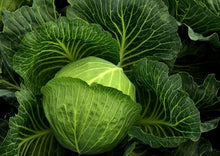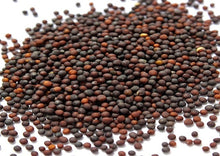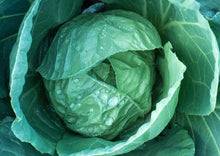Heirloom Golden Acre Cabbage is an open-pollinated variety that has been around for over a century. It was developed in the early 20th century by seed companies in the United States, specifically the "Golden Acre" variety was developed by the W. Atlee Burpee Seed Company, it was an early hybridization of the traditional green cabbage. This variety is known for its compact, dense heads and its sweet and delicate flavor.
The Golden Acre cabbage is a reliable and productive variety that can be planted in the spring or fall, it's well-suited for small gardens and home gardening. It has become a popular choice among home gardeners and farmers alike because of its hardiness and ability to withstand cooler temperatures.
Golden Acre cabbage is a versatile vegetable that can be eaten raw or cooked, it's packed with vitamins and minerals, such as Vitamin C and K, and it's a low-calorie food. It's commonly used in coleslaw, sauerkraut, and fermented dishes, but it can also be steamed, grilled, sautéed, or used in soups and stews.
Heirloom Golden Acre Cabbage is a reliable and productive variety that has been around for over a century, it's well-suited for small gardens and home gardening, it's versatile and nutritious, and it's a great addition to any home garden.
Growing
- Understand cabbage is a heavy feeder; it quickly depletes the soil of required nutrients.
- Prepare soil in advance by mixing aged manure or compost. Soil should be well-draining, roots that stand in water cause heads to split or rot.
- Start indoors about 6 to 8 weeks before the last spring frost.
- Before planting the seedlings outdoors, harden off the plants over the course of a week or two.
- Transplant small plants outdoors on a cloudy afternoon 2 to 3 weeks before the last spring frost date.
- Plant seedlings 12 to 24 inches apart in rows, depending on the size of head desired. The closer you plant, the smaller the cabbages.
Care
- When seedlings reach about 5 inches tall, thin to leave the desired space between them.
- Mulch around the area to retain moisture and regulate soil temperature. The optimum soil temperature is about 60 °F to 65 °F. Plants exposed to temperatures below 45°F may form loose heads.
- Fertilize 2 weeks after transplanting with a balanced (10-10-10) fertilizer.
Harvest
- Harvest when heads reach desired size and are firm. Mature heads will split. This will take around 75-90 days for most cabbage varieties.
- To harvest, cut each cabbage head at its base with a sharp knife. Remove any yellow leaves (retain loose green leaves; they provide protection in storage) and immediately bring the head indoors or place it in shade.
- To get two crops, cut the cabbage head out of the plant, leaving the outer leaves and root in the garden. The plant will send up new heads; pinch off those until only four or so smaller heads remain. Harvest when tennis ball-size (perfect for salads!).
- After harvesting, remove the entire stem and root system from the soil to prevent disease. Only compost healthy plants; destroy any if infested.









